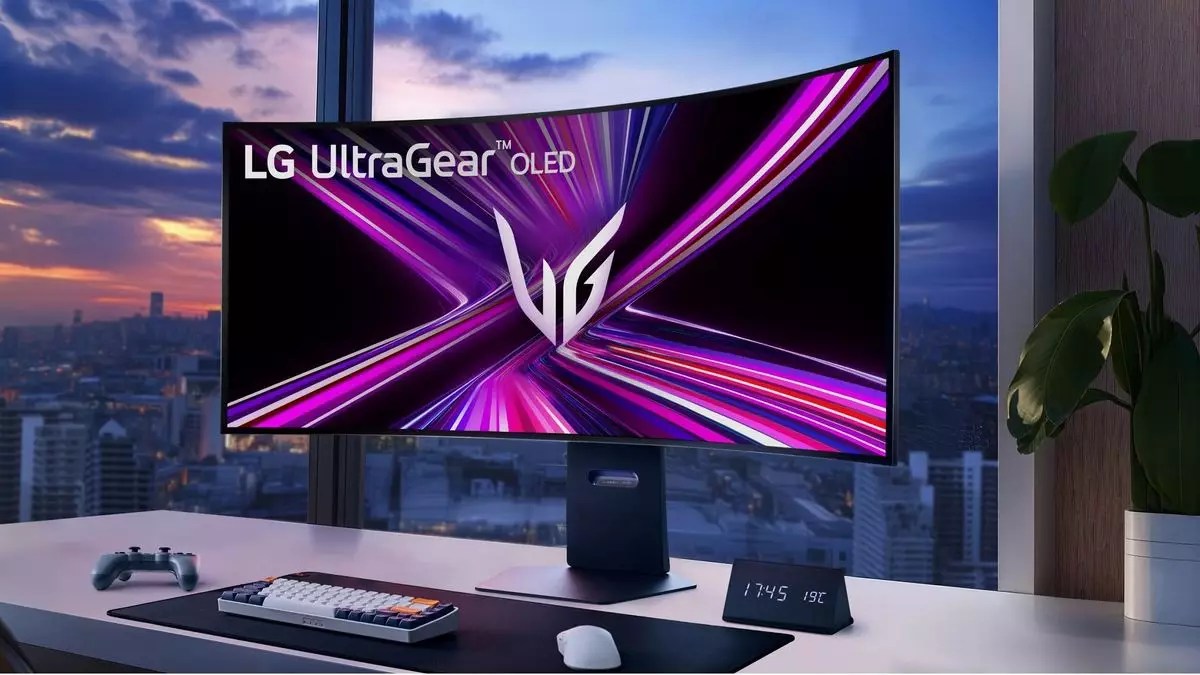The landscape of PC gaming monitors is rapidly evolving, and one of the most compelling developments in recent years is the rise of OLED technology. As noted by industry leader LG, OLED monitors now account for approximately 22% of the PC gaming monitor market—an astonishing figure when considering that this technology was only introduced to gaming monitors a mere two years ago. This dramatic growth in market share stands in stark contrast to the more gradual acceptance of OLED TVs, which currently hold only 18% of the television market this decade after their inception.
To understand the current state of OLED in the PC gaming arena, it’s important to look back at how this technology first emerged in this space. The Alienware 34 AW3423DW was the trailblazer, offering the first significant experience of OLED in a gaming monitor when it launched almost three years ago. Following closely behind, LG is now also producing a diverse array of OLED gaming monitors. The surge in interest and adoption of OLED technology can be attributed to the unique advantages it offers over traditional LCD panels, including superior contrast ratios, vibrant colors, and faster response times.
However, despite the undeniable quality improvements that OLED brings, the adoption rate raises questions. How is it possible for a high-cost technology to capture the attention of so many gamers? One would assume pricing would be a major hindrance, and yet here we are with 22% of the market embracing OLED. The reality reveals a keen interest among gamers who prioritize performance and visual fidelity, often willing to invest more for the right display equipment—even in the face of high MSRPs.
The Pricing Paradox: Why are OLED Monitors So Pricey?
Current OLED gaming monitors typically start at around $600 for entry-level models, with the average price hovering near $1,000 or more—quite a steep investment for many gamers. Comparatively, LCD monitors can be found at significantly lower price points—often $200 to $300 for models that offer decent specifications. This pricing disparity raises eyebrows and leads us to wonder why such a premium is placed on OLED technology in the monitor realm when larger OLED TVs can be found for similar or lower prices.
This conundrum can partly be attributed to the nascent stage of OLED adoption in monitors, as well as the manufacturing processes that lead to higher costs. While LG has made strides in reducing production costs, the market still experiences growing pains that other technologies have long since passed. If OLED monitors are to become a mainstream commodity rather than a luxury, significant price adjustments are necessary. Ideally, a 32-inch 4K OLED monitor priced around $500 would entice many more consumers and elevate the technology’s status in the market considerably.
Despite the high prices, the demand for OLED monitors appears only to be increasing. Consumers are clearly on the lookout for displays that enhance their gaming experience, and as new OLED technologies are announced, the potential for addressing long-standing shortcomings increases. For example, during CES, companies like Samsung and LG unveiled new panel technologies boasting higher brightness levels—possibly reaching up to 400 nits. Such advancements could significantly alleviate concerns regarding brightness, which has traditionally been a point of contention for OLEDs in bright environments.
Improved capabilities could pave the way for wider adoption of OLED monitors. Gaming and tech enthusiasts are likely to embrace this change, provided that pricing remains competitive. The market is becoming ripe for a diversification of products that would provide gamers with choices that meet their preferences both in performance and price.
Looking ahead, one can speculate that OLED monitors will continue to carve a larger niche in the PC gaming market. Should prices fall and technology improve, we may witness a future where sub-$500 OLED gaming monitors become commonplace. As the demand builds and technology becomes more accessible, the transition from luxury to mainstream might not be far off.
However, it must also be noted that the industry is still in a transitional period. The high-end OLED models, such as LG’s impressive 5K2K Ultragear 45GX950A, priced at $2,000, remain exclusive and out of reach for a significant segment of consumers. It will take time—and probably additional advancements in manufacturing—for tiles at such high echelons to become affordable.
The rise of OLED in the PC gaming monitor market reflects changing consumer preferences and technological advancements. As prices potentially decrease and performance improves, the future of OLED monitors looks promising, with a real chance to become a dominant player in the gaming experience.


Leave a Reply